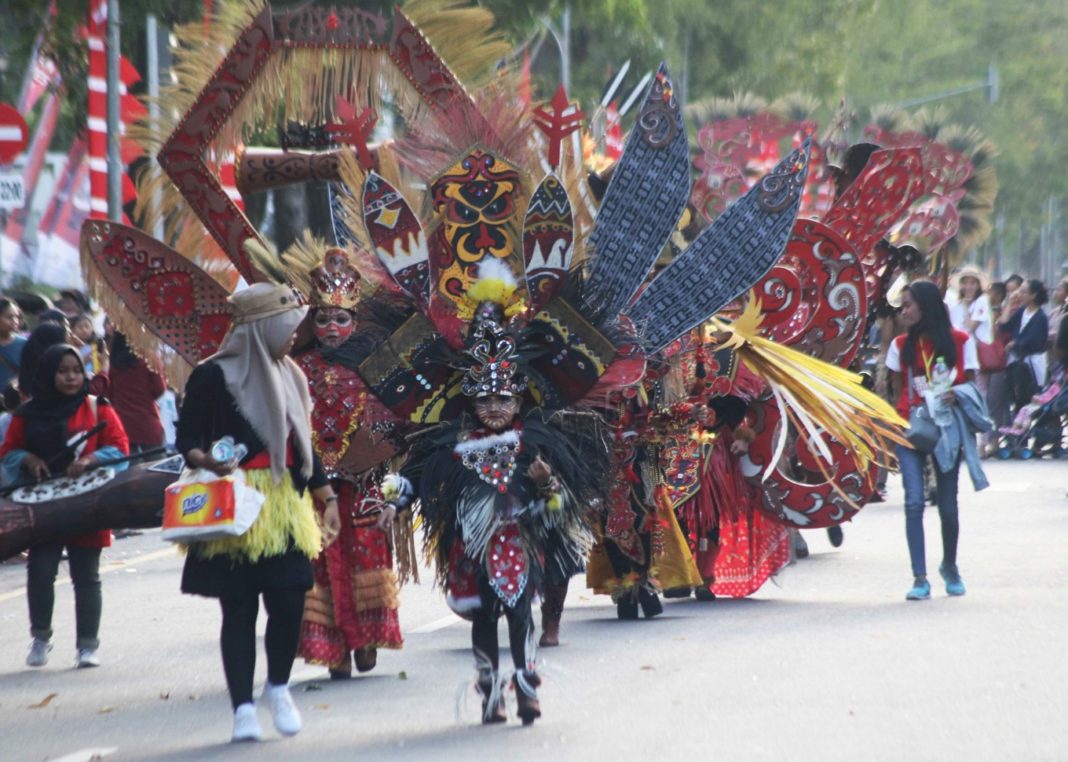The first Solo Batik Carnival was held on April 13, 2008. Solo is the nickname for the city of Surakarta – a large city located in the Central Java region of Indonesia. This festival is held as an annual celebration of Indonesian heritage and culture. In particular, the Solo Batik Carnival was created to be a world-class carnival designed to showcase batik, an ancient Indonesian craft.
 Batik is a unique man-made wax resistant dying technique that transforms clothes into gorgeous works of art. Batik is created by selecting areas from a piece of fabric and covering it with melted wax. The fabric is then dipped for dying and the parts covered in wax are able to resist the dye and remain the original fabric colour. This process is continually repeated to create colourful and elaborate designs. Different regions of Indonesia have their own batik patterns which are unique to them and may include flowers, nature or animals. In 2009 Indonesian batik was even officially recognised by UNESCO as being a “Masterpiece of Oral and Intangible Heritage of Humanity”.
Batik is a unique man-made wax resistant dying technique that transforms clothes into gorgeous works of art. Batik is created by selecting areas from a piece of fabric and covering it with melted wax. The fabric is then dipped for dying and the parts covered in wax are able to resist the dye and remain the original fabric colour. This process is continually repeated to create colourful and elaborate designs. Different regions of Indonesia have their own batik patterns which are unique to them and may include flowers, nature or animals. In 2009 Indonesian batik was even officially recognised by UNESCO as being a “Masterpiece of Oral and Intangible Heritage of Humanity”.
The Solo Batik Carnival is a 4km procession that is held along the main street of Solo City – Slamet Riyadi Street. The Solo Batik Carnival Parade begins at the Purwosari intersection and continues along ending at the Solo City Hall. Before the parade, there is a fashion show held at Sriwedari stadium.
 The highlight of Solo Batik Carnival is a cultural parade. The Solo Batik Carnival parade is where models will show off their colourful hand-made traditional and colourful batik costumes. The participants perform traditional Indonesian dances to show off their batik creations. This parade is all about being a medium, to express the art of Batik. The parade attracts thousands of people who flock to Surakarta’s main street to witness the parade and learn about the local culture. Around 300-400 participants are part of the Solo Batik Carnival Parade which essentially like a dancing, parade fashion show.
The highlight of Solo Batik Carnival is a cultural parade. The Solo Batik Carnival parade is where models will show off their colourful hand-made traditional and colourful batik costumes. The participants perform traditional Indonesian dances to show off their batik creations. This parade is all about being a medium, to express the art of Batik. The parade attracts thousands of people who flock to Surakarta’s main street to witness the parade and learn about the local culture. Around 300-400 participants are part of the Solo Batik Carnival Parade which essentially like a dancing, parade fashion show.
2019 carnival-themed as Suvarna Bhumi: The Golden of ASEAN. Delegations from 11 Southeast Asian countries, namely Indonesia, Malaysia, Philippines, Brunei Darussalam, Singapore, Myanmar, Vietnam, Laos, Cambodia, Thailand and Timor Leste, showcased traditional outfits from their countries and kicked off the event with various artistic performances.
According to Wikipedia and carnivaland.net














